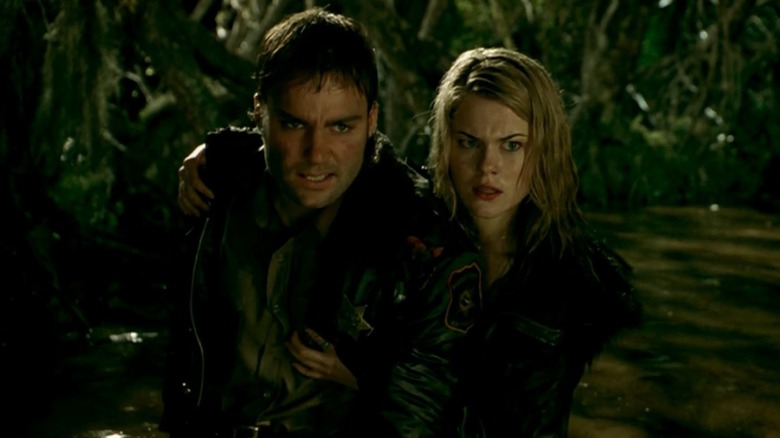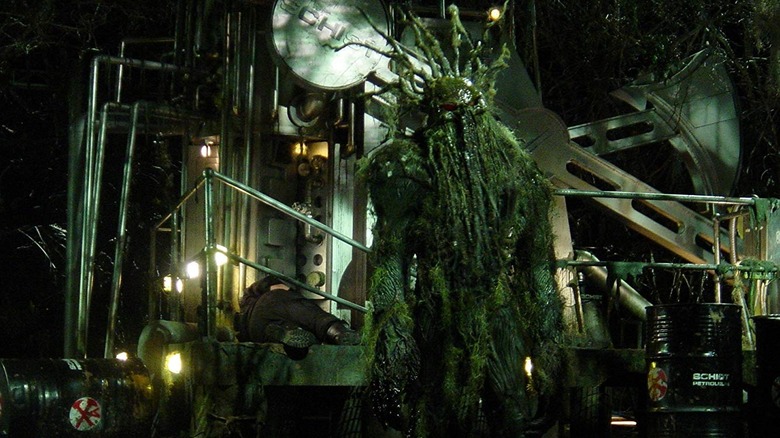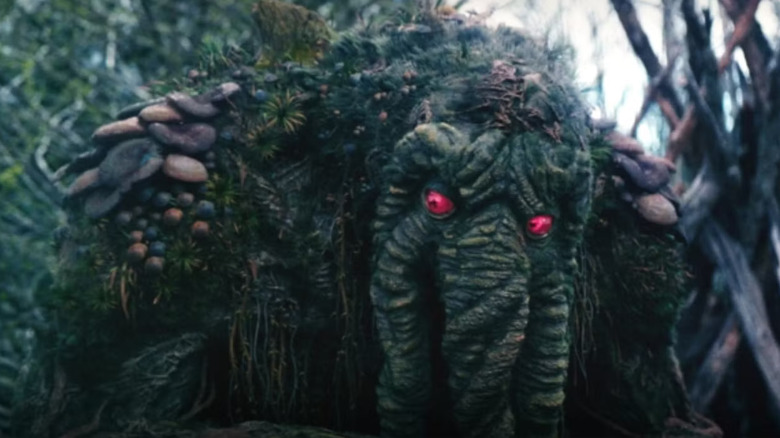The Awful TV Movie You Had No Idea Marvel Boss Kevin Feige Produced
Kevin Feige is one of those nerds whose dream came true. He graduated from the University of Southern California in 1995 and immediately got a gig as the assistant to Lauren Shuler Donner, the executive producer of Hollywood flicks like "Volcano" and "You've Got Mail." Evidently, Feige wouldn't stop talking about his obsession with Marvel Comics, and Donner got him a job working on Bryan Singer's 2000 film "X-Men" as a result. Feige has an associate producer credit on that film, and it went on to be a big hit. Not only that, but it was proof that Marvel superheroes were viable for screen adaptation, and a door started to swing open, both for the genre and for Feige.
At the time, Avi Arad was the head of Marvel's film division, and he was so impressed with Feige's job on "X-Men" that he was instantly hired to be Arad's second-in-command. Feige began serving as the executive producer on all the newest Marvel projects, including films like "Daredevil," "Hulk," "The Punisher," and Sam Raimi's "Spider-Man 2." These films were mostly all hits, even if fans gave them (collectively) a mixed reaction. "Spider-Man 2" was deeply beloved. "Hulk" and "Daredevil" were derided. Given that Marvel movies would come to eventually dominate both the cinematic marketplace and every film conversation for a decade, one can see the mid-2000s as Feige's growth period, the time when he was building to the industry giant he would eventually become.
During this growth period, though, there was one legitimate Marvel bomb that few discuss in superhero movie conversations. Brett Leonard's 2005 film "Man-Thing," a horror flick about a towering killer swamp creature, was reportedly so bad that it was pulled from theaters and released as a Sci-Fi Channel (aka Syfy) original movie.
Remember Man-Thing?
The Lonely Geek website noted that "Man-Thing" was originally intended to be a theatrical release on Halloween, 2004, but was moved to a straight-to-video project on the company's schedule the following quarter. There was meant to be a tie-in music video for "Man-Thing" (performed by the band AzUR), as well as a prequel comic published by Marvel. It was going to be a whole thing. At the last minute, though, Arad pulled the film from theatrical release, not wanting to spend the ad money on a film that was certainly going to tank. Certainly? It seems that audience members actually walked out of test screenings. That was enough to make Arad wary.
It may have been a good thing, as "Man-Thing" was very poorly reviewed, getting a 14% approval rating on Rotten Tomatoes, based on seven reviews. No one is a fan. The direction is fine (director Leonard had previously made slick, tech-based thrillers like "The Lawnmower Man" and "Virtuosity"), but the pace is sluggish, the characters are boring, and the dialogue is terrible. The main character is Sheriff Kyle Williams (Matthew Le Nevez), who is investigating corporate malfeasance in Seminole County, surrounded by Florida swamps. His investigations reveal a Seminole creature, the titular Man-Thing, a towering human-shaped mound of vines and moss.
The Man-Thing was played by seven-foot Australian wrestler Conan Stevens, dressed in a giant suit, but enhanced with CGI. The monster killed evil-doers. If you were experiencing fear, and the Man-Thing touched you, it would burn. It would later be revealed that the Man-Thing was once a Seminole shaman who was resurrected and transformed into a swamp monster by local magic. The Man-Thing has glowing red eyes and savages bad guys. Leonard shoots Man-Thing in the shadows, leaving him a monster instead of a superhero.
Kevin Feige eventually tried to rescue Man-Thing
The Man-Thing character was invented in 1971, released about a year and a half before DC's very similar Swamp Thing. One did not rip off the other, though, as far as anyone can tell. One of the Man-Thing's creators, Gerry Conway, was once roommates with Swamp Thing's co-creator Len Wein, and it's likely they simply brought similar "swamp creature" ideas to the respective companies where they worked.
The 2005 movie was only sought out by Marvel obsessives, which was a much smaller crowd in 2005 than I would be by the end of the decade. Feige would serve as the executive producer on modest hits (some of them critically disliked) like "Fantastic Four," "Spider-Man 3," and "X-Men: The Last Stand." By the end of the 2000s, it seemed like superheroes weren't going to last much longer. Marvel's star characters — the X-Men, Spider-Man, and the Fantastic Four — had already been given the star treatment, and no one wanted to see C-list characters like the Punisher or Iron Man.
Yes, in 2008, Jon Favreau's "Iron Man" was considered something of a risk, as the character had, at the time, very little geek cultural clout. "Iron Man," however, proved to be a hit against all odds. Its success got Feige promoted to head of Marvel Studios. Disney bought the company, left him in charge, and Feige was finally able to implement his plan for a Cinematic Universe. The rest is history.
Feige, however, might have felt the need to redeem the Man-Thing character and pulled him up out of the Sci-Fi Channel's ashes almost 20 years later. In 2022, Feige oversaw the production of Michael Giacchino's "Werewolf By Night," an MCU TV project starring Gael García Bernal as the titular werewolf. The story followed Bernal into a rich monster-hunter's mansion, where he was secretly seeking to locate and rescue Man-Thing from a maze on the property. "Werewolf By Night" depicted the Man-Thing as friendly and gentle. At last, the rotten 2005 film could be ignored.


